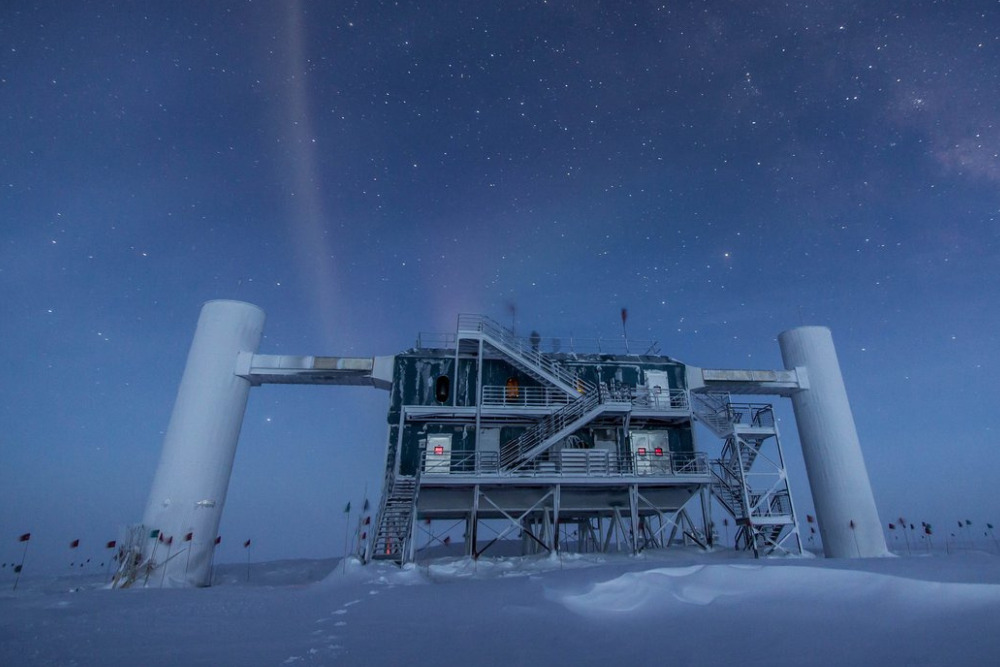
Astrophysics has witnessed a groundbreaking advancement as the collaboration between Machine Learning and Astrophysics takes center stage. The focus of this exciting development lies in unraveling the mysteries of neutrinos, and their immense potential to shed light on the universe. Whereas previously only neutrinos from distant galaxies had been detected, the predictions of similar particle radiation for our Milky Way could now be confirmed for the first time by using modern Machine Learning methods. The ML method used was significantly developed by Lamarr researchers. They allow mankind’s first Neutrino view of our own home galaxy.
Neutrinos, unlike light rays, have the unique ability to penetrate through matter effortlessly due to their almost massless nature. Being impervious to deflection, they act as signposts, pointing to their cosmic origins in the vast expanse of space when their trajectory and energy can be precisely determined.
The IceCube detector, an ambitious project that went into operation at the South Pole in 2010 after only six years of construction, plays a crucial role in the study of neutrinos. Equipped with Digital Optical Modules (DOMs), the experiment’s purpose is to capture these elusive particles. However, detecting neutrinos is no simple feat. Amongst a staggering influx of 2700 muons per second, only one astrophysical neutrino graces us with its presence each day. The overwhelming background noise further complicates matters, with neutrinos from distant corners of the universe overshadowing those from our own Milky Way galaxy.
This is where the use of Machine Learning comes into the picture, which has opened up new possibilities for deciphering this cosmic mystery. Mirco Hünnefeld, a leading figure in this endeavor, used a set of Convolutional Neural Networks strengthened by Decision Trees for neutrino selection. This pioneering approach led to a remarkable increase: 30 times more neutrinos were detected compared to previous studies. This data-driven search for neutrinos was verified by random experiments on large data sets. The results of the underlying study were published in Science magazine (June 30, 2023) (paywall).
The successful application of machine learning has led to a significant improvement in neutrino reconstruction, equivalent to about 75 years of conventional detection time. The method used was developed significantly by Lamarr PI Prof. Dr. Dr. Wolfgang Rhode and his astroparticle physics group at the Technical University of Dortmund in collaboration with Lamarr Founding Director Prof. Dr. Katharina Morik and her AI group at Collaborative Research Center 876.
The future for merging Machine Learning and Astroparticle Physics looks extremely promising. The collaboration has already resulted in an open-access book that can be used in educational settings, further disseminating knowledge in this emerging field:
With the interdisciplinary research field of Astrophysics led by Wolfgang Rhode, the Lamarr Institute is pioneering the partnership between AI and Astroparticle Physics and driving innovative research in this area. This merging of disciplines marks a significant chapter in the exploration of our cosmos, with Machine Learning and Astroparticle Physics going hand-in-hand to unlock the secrets of neutrinos.
The announcement of the results on June 29, 2023 with the participation of Wolfgang Rhode and Mirco Hünnefeld can be viewed in full length here (recording):


